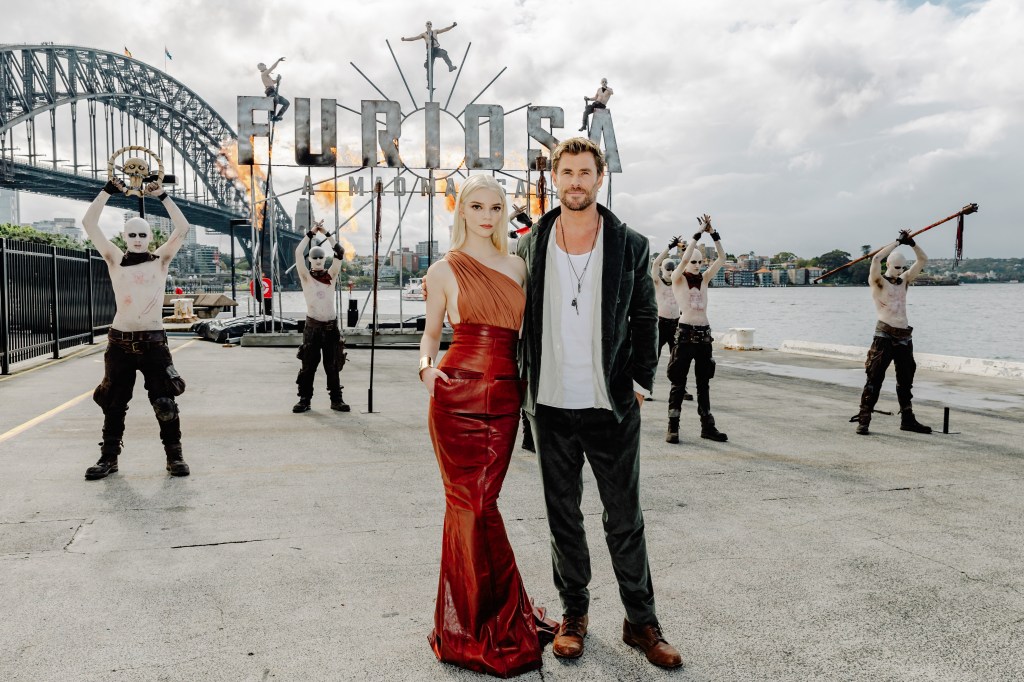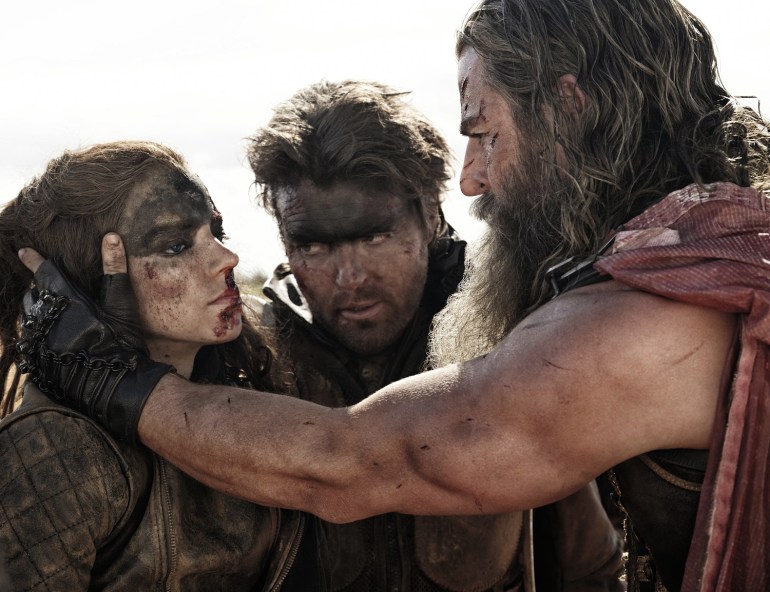George Miller’s Furiosa: A Mad Max Saga has been measured every which way against previous instalments of the series following its world premiere in Cannes overnight, drawing mostly positive reactions from critics who sympathised with the task of following up Mad Max: Fury Road.
It was nine years ago that the previous Mad Max film, starring Charlize Theron and Tom Hardy, premiered at Grand Théâtre Lumière at the Palais des Festivals on its way to raking in more than USD$380 million and winning six Oscars, with the challenges of the 2012 production in Namibia having since becoming the stuff of legend.
The action returns to Australia in the newest chapter, with Alyla Browne and Anya Taylor-Joy taking over the role of the titular character who is snatched from the Green Place of Many Mothers and falls into the hands of a great Biker Horde led by the Warlord Dementus, played by Chris Hemsworth.
Taking place over 15 years, the standalone action film follows Furiosa as she spends her formative years at the Citadel, following an exchange between Dementus and Immortan Joe (Lachy Hume).
As the two tyrants fight for dominance, Furiosa escapes her place among Immortan Joe’s wives and plots a path toward returning home and exacting revenge.
Expectations were always high for the film, produced by Kennedy Miller Mitchell for Warner Bros. Pictures and Village Roadshow Pictures, which had a reputed budget of more than $400 million, making it the largest production to ever shoot in Australia.
According to Deadline, which reported a nearly eight-minute standing ovation at the end of the out-of-competition screening, the film “has the goods”, with critic Peter Hammond writing Miller and co-writer Nico Lathouris had created “the best screenplay of any Mad Max film”, while also praising the casting choices.
“When the time came to make this prequel they already had the goods, and it was up to the casting to bring it to life,” he wrote.
“In this regard, Miller hit a bull’s-eye, not just with Hemsworth and Taylor-Joy but also the brilliant [Tom] Burke, who nails Praetorian Jack with abandon. [Alyla] Browne as the younger Furiosa is also extraordinary in a role that is much more than just a gateway for Taylor-Joy to take over. The large and colorful supporting cast is so much fun to watch including Hulme who not only plays The Immortan Joe, but also in full regalia as Rizzdale Pell.”
Owen Gleiberman was more tempered in his assessment for Variety, which reported a six-minute ovation, describing the film as “darkly bedazzling” and one that will “be embraced and defended in a dozen passionate ways”, but also “falls very short of being a “Mad Max” home run”.
“One of the many things to cherish about Fury Road is that, for all its crash-and-burn splendor and dizzying editing, it channeled the exploitation-film DNA of the original Mad Max films,” he wrote.
“It was a vision of the future (and of the rise of women), but like those first two films, it found its meaning in action. That was its gritty glory.

“Furiosa, by contrast, is a picaresque with a stop-and-go rhythm, as the young Furiosa goes from the frying pan into the fire, like a heavy-metal Candide, forming attachments through her survival instincts but never sticking with anyone for long. She’s a lone wolf in a world of scoundrels. Theoretically, that’s easy to understand, but a movie, almost by nature, needs to be about the forging of bonds. And “Furiosa,” as populated as it is with disposable warriors (and characters with names like Scrotus and Toe Jam and The Octoboss and The People Eater and War Boy), feels alienated and a touch impersonal.”
For The Hollywood Reporter‘s David Rooney, the fifth film in the franchise was “closer in spirit and time frame” to the first two Mad Max films, where “world has devolved into barbarism, with marauding gangs spreading terror across the land, but there are still people who remember a time before lawlessness”.
However, he also noted in his review that Miller had taken “a big step down from Fury Road“.
“Whereas the 2015 instant action classic had grit, gravitas, and turbo-charged propulsion that wouldn’t quit, this fifth installment in the dystopian saga grinds on in fits and starts, with little tension or fluidity in a narrative whose shapelessness is heightened by its pretentious chapter structure,” he wrote.
Writing for IndieWire, David Ehrlich was more philosophical about the relationship of Furiosa with its predecessor, noting Furiosa “retroactively makes Fury Road feel like a coda for the epic tale Miller tells”.
“Does Furiosa deliver the kind of system shock that made its predecessor feel like such a violent rebuke to superhero-era Hollywood? Absolutely not — though its two bonafide set pieces both eclipse the most electric moments of Fury Road, while also iterating on them in fantastic new ways (the much-hyped “Stowaway to Nowhere” sequence is an out-of-body experience),” he wrote.
“But Miller’s decision to shift gears ultimately proves to be his prequel’s greatest strength, even for those of us who might wish that it could end with another 30-car pile-up instead of a proverbial fender-bender.”
Furiosa: A Mad Max Saga will land in Australian cinemas on May 23 via Warner Bros. Pictures.


